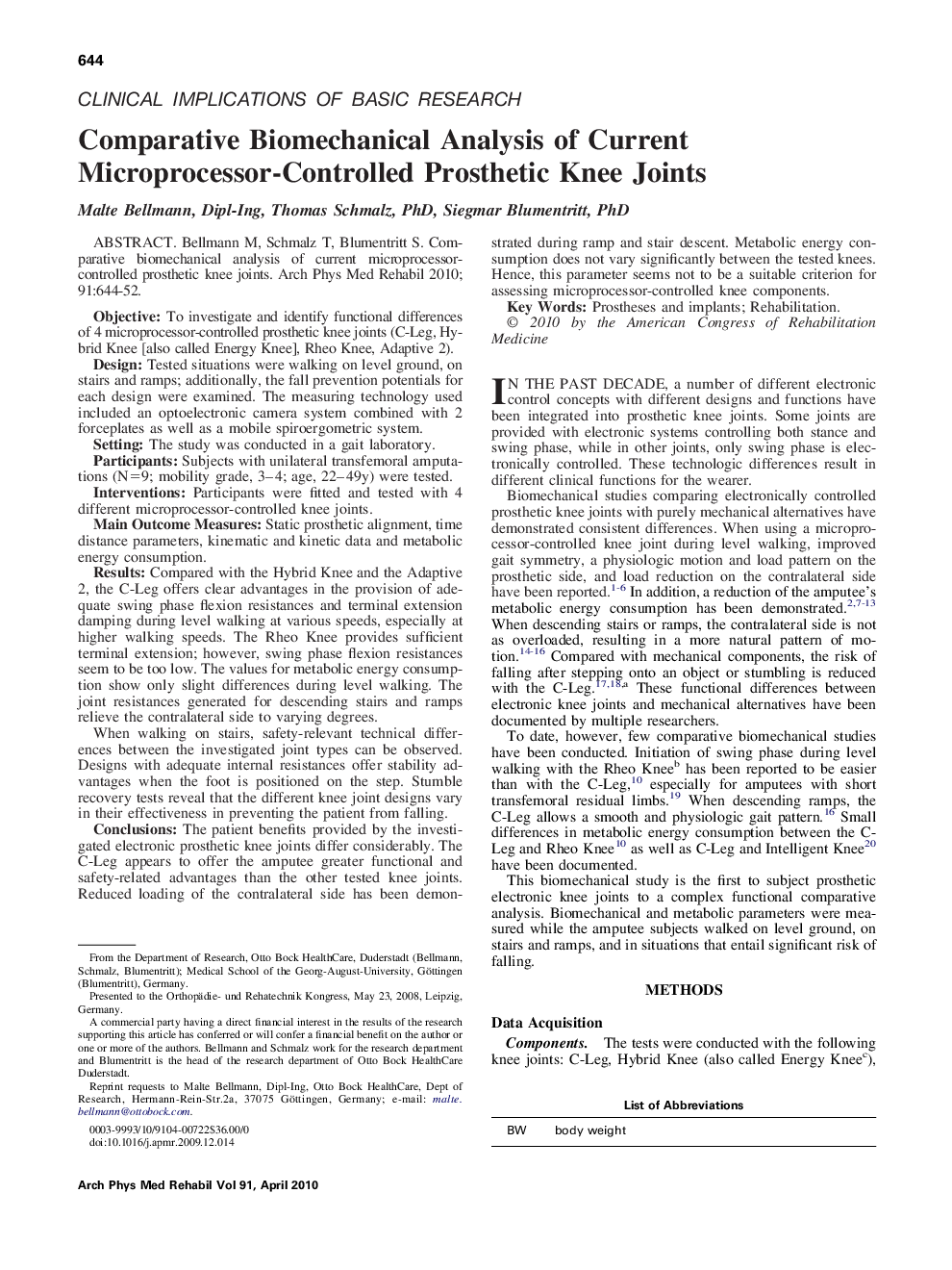| کد مقاله | کد نشریه | سال انتشار | مقاله انگلیسی | نسخه تمام متن |
|---|---|---|---|---|
| 3450837 | 1595754 | 2010 | 9 صفحه PDF | دانلود رایگان |

Bellmann M, Schmalz T, Blumentritt S. Comparative biomechanical analysis of current microprocessor-controlled prosthetic knee joints.ObjectiveTo investigate and identify functional differences of 4 microprocessor-controlled prosthetic knee joints (C-Leg, Hybrid Knee [also called Energy Knee], Rheo Knee, Adaptive 2).DesignTested situations were walking on level ground, on stairs and ramps; additionally, the fall prevention potentials for each design were examined. The measuring technology used included an optoelectronic camera system combined with 2 forceplates as well as a mobile spiroergometric system.SettingThe study was conducted in a gait laboratory.ParticipantsSubjects with unilateral transfemoral amputations (N=9; mobility grade, 3–4; age, 22–49y) were tested.InterventionsParticipants were fitted and tested with 4 different microprocessor-controlled knee joints.Main Outcome MeasuresStatic prosthetic alignment, time distance parameters, kinematic and kinetic data and metabolic energy consumption.ResultsCompared with the Hybrid Knee and the Adaptive 2, the C-Leg offers clear advantages in the provision of adequate swing phase flexion resistances and terminal extension damping during level walking at various speeds, especially at higher walking speeds. The Rheo Knee provides sufficient terminal extension; however, swing phase flexion resistances seem to be too low. The values for metabolic energy consumption show only slight differences during level walking. The joint resistances generated for descending stairs and ramps relieve the contralateral side to varying degrees.When walking on stairs, safety-relevant technical differences between the investigated joint types can be observed. Designs with adequate internal resistances offer stability advantages when the foot is positioned on the step. Stumble recovery tests reveal that the different knee joint designs vary in their effectiveness in preventing the patient from falling.ConclusionsThe patient benefits provided by the investigated electronic prosthetic knee joints differ considerably. The C-Leg appears to offer the amputee greater functional and safety-related advantages than the other tested knee joints. Reduced loading of the contralateral side has been demonstrated during ramp and stair descent. Metabolic energy consumption does not vary significantly between the tested knees. Hence, this parameter seems not to be a suitable criterion for assessing microprocessor-controlled knee components.
Journal: Archives of Physical Medicine and Rehabilitation - Volume 91, Issue 4, April 2010, Pages 644–652